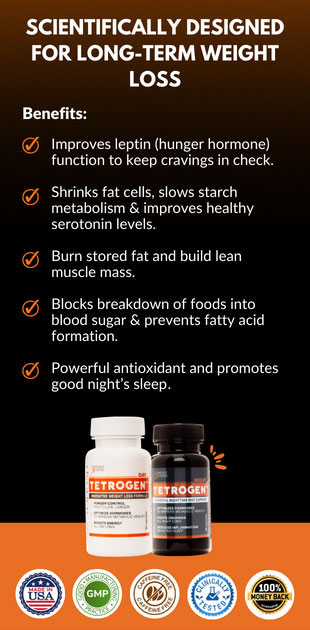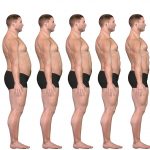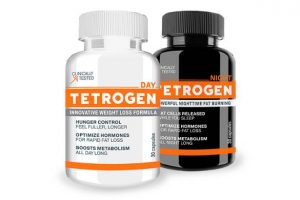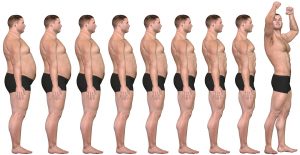
When it comes to losing weight, we’re often told to move more and eat less to create a calorie deficit. However, that equation leaves out one of the most important aspects of losing weight: metabolism. The term “metabolism” describes the chemical reactions in the body that keep us functioning. More often, though, it’s used interchangeably with metabolic rate, which refers to the number of calories the body burns. The higher the metabolic rate, the more calories burned. Plus, a higher metabolism also means greater energy levels. So, it’s only logical then to search for the best things to boost your metabolism to help you lose weight, keep it off, and feel better.
While you do have control over many aspects of your metabolism, it’s not 100% under your control. Your body type, genetics, gender, and age all impact how well you burn calories. However, there is still much you can do to permanently increase your metabolism. It all starts with healthy habits.
Fortunately, there are a lot of ways to boost your metabolism—backed by science—that work in the real world.
Best Things to Boost Your Metabolism: Movement
1) Stand up. In today’s society, many of us spend the vast majority of our lives seated. And that’s just bad for our health. Being sedentary increases the risk of disease, which leads to increased hospitalization and early death. 1
Sitting for long stretches also slows the metabolic rate. Standing up, on the other hand, boost your metabolism. For example, if you work a desk job, you can burn an extra 50 calories per hour or 174 calories in an afternoon if you choose to stand rather than sit. 2 To boost your metabolism, break up your sitting by standing up for at least short bursts throughout the day. Then build up the amount of time you stand to at least three hours per day. 3 If you have a laptop, for instance, you can place it on a countertop, taller dresser, or standing desk.
2) HIIT it hard. One of the most common excuses for not exercising is a lack of time. Fortunately, with the right forms of exercise, you can boost your metabolism. Plus, this benefit continues long after even a short workout has finished. 4 – 6 One of the best forms is known as High-Intensity Interval Training or HIIT. This type of exercise alternates short bursts of very intense exercise with short rests. Here’s an example for a 15-minute HIIT session:
- Walk for 2 minutes to warm up
- Jog or run (depending on your fitness level) for 30 – 60 seconds
- Jog or walk for 30 – 60 seconds
- Repeat the jog/run and walk cycle 6 – 10 times
- Walk for 2 minutes to cool down.
In one study, overweight young men followed a 20-minute HIIT regimen 3 times a week for 12 weeks. Compared to the control group, the men lost over 3 pounds, including nearly 4 1/2 pounds of fat. What’s more, they reduced the fat around their waists by 17%. 7 In another similar study with young women, researchers found that three 20-minute HIIT workouts per week helped women lose 5.5 more pounds. They also gained muscle mass over those who did standard steady-state cardio workouts. 8
If you’re having one of those days when exercising intensely for even 15 minutes seems like too much effort, then how about 2.5 minutes? One study found that just five 30-second bursts of maximum effort on a bike, followed by four minutes of rest, burned an extra 200 calories. It then boost your metabolism for up to 48 hours! 9
3) Lift progressively heavier weights. Muscle tissue is more metabolically active than fat tissue. In other words, an increase in lean mass can boost metabolism and help you burn more calories. This effect isn’t just when you’re exercising. You’ll burn more calories even when you’re sitting around relaxing. 10 Surprisingly, up to 80% of the calories you burn each day are just from keeping the body alive and functioning. 11
Perhaps most importantly, increasing muscle mass by lifting weights can prevent the normal decrease in metabolism (along with strength) typically caused by a loss of weight. 12
One of the best ways to increase muscle mass is to follow a weight-training or resistance-training program using progressively higher weights.
4) Sleep it off. An often-overlooked aspect of a healthy metabolism is ensuring you are getting enough sleep. 13 For example, the negative effects of a lack of sleep include lowered metabolism, increased blood sugar, and insulin resistance. 14,15 All of these can hinder weight-loss goals dramatically.
Sleep also has an impact on the hunger hormones ghrelin and leptin. This may help explain why people who chronically miss out on good sleep struggle to lose weight. 16,17
To help improve your sleep at night, turn off the computer, phone, or TV screens at least an hour before it’s time for shuteye. You can also install apps like f.lux or Twilight to turn off the blue light. Blue light disturbs melatonin, which is the hormone that tells our bodies it’s time to sleep.
Best Things to Boost Your Metabolism: Food & Drink
1) Eat more protein. There’s a lot of debate on the best way to eat to boost your metabolism. But one thing science has firmly supported is ensuring you eat enough protein. You see, whenever you eat, your body responds with a slight increase in metabolism to digest, absorb, and process the nutrients. This is called TEF or the thermic effect of food.
Protein, it turns out, causes TEF and thus metabolism to increase the most—up to 30%. That’s compared to up to 10% for carbs and a mere 0% to 3% for fats. 18 Simply increasing the amount of protein consumed from 15% to 30% with each meal (and especially at breakfast) is a simple way to increase calorie burn. 19 ,20
What’s more, protein helps you feel fuller and keeps you satisfied longer after meals, leading to decreased calorie consumption. 21 In one study, for example, researchers found that people who ate 30% of their calories as protein consumed ~441 fewer total calories each day. 22
Finally, increasing the amount of protein you consume has been shown to help reduce the metabolic rate decrease often associated with dieting and weight loss. This is possibly because it helps people maintain lean mass. 23
Some metabolic-rate-boosting high-protein foods to add to a healthy diet include:
- Eggs
- Poultry
- Lean meat
- Beans
- Legumes
- Nuts and seeds
Beans may provide the biggest bump to the metabolism as they provide both protein and fiber, which helps level out blood sugar. One study, for example, showed that people consuming just a ¾ cup serving of beans per day weighed, on average, 6.6 pounds less than those who didn’t. That’s despite consuming an average of 199 extra calories per day. 24
2) Eat enough. One of the biggest mistakes many people make when trying to lose weight is to cut calories too drastically. Unfortunately, when you don’t consume enough calories, you are more likely to lose muscle mass. This then decreases the metabolism, slowing down the rate calories are burned, causing your weight loss to halt.
Instead of just deeply cutting calories, modestly cut calories and increase exercise to slim down while supporting a strong metabolic rate. It’s also important to choose foods that take more energy to digest. For example, choose nutrient-dense whole foods like oatmeal, quinoa, and brown rice, which can increase energy expenditure after eating by as much as 50% over processed options. 25
3) Drink water. It makes sense that people who drink naturally calorie-free water are more successful at losing weight than those who consume sugary drinks like soda and sweet tea. 26 In addition, however, it appears that just drinking water can increase metabolism, at least briefly. 27 ,28
Some research has demonstrated, for example, that drinking just a half liter of water can increase the resting metabolic rate by up to 30% for around an hour. 29 ,30 Water can also help you eat less when you drink water about a half hour before eating.
Increased water consumption has consistently been shown to support weight loss. And it may be even more effective when cold water is consumed, as the body must use energy to bring it up to body temperature. 31
4) Drink some coffee or tea. Both coffee and tea are calorie-free drinks (at least before any sugar or cream is added). This can support weight loss over drinking calorie-dense drinks.
On top of that, however, the caffeine found in coffee and tea has been shown to boost metabolism by up to 11%. 32 ,33 And it’s also been shown to increase fat burning, especially in people who are already lean. (It appears to have a lower effect in overweight people.) 34
Green, oolong, and white teas also provides epigallocatechin-3-gallate (EGCG). This natural compound has been shown in some research to boost energy expenditure and fat burning throughout the day. 35 ,36
Depending on the study, the effects of both coffee and tea on metabolic rate and weight loss, however, appear to differ dramatically from person to person. Some show benefit while others show none at all.
5) Make it spicy. If you like hot peppers, you’re in luck. Research has found the capsaicin in peppers that brings on the spice may also boost metabolism, increase satiety, and promote fat burning. 37 If you don’t like it hot, you may be in luck too. Capsaicin’s non-spicy cousin, dihydrocapsiate (DCT), was shown in research to be just as effective. 38 However, the effects appear to be modest and may offer only a slight, if any, benefit for weight loss or maintenance. 39
How to Increase Metabolism Rate Permanently
To increase metabolism rate permanently, you need to make long-term changes like those discussed above. Any of these metabolic rate boosters works only as long as continued. With the weight-loss benefits, along with increased energy levels and improved general health, however, modest effort required. Yet the simple lifestyle modifications required appear to be well worth it.
Movement References:
1. Biswas A, Oh PI, Faulkner GE, Bajaj RR, Silver MA, Mitchell MS, Alter DA. Sedentary time and its association with risk for disease incidence, mortality, and hospitalization in adults: A systematic review and meta-analysis – PubMed. Annals of Internal Medicine. 2015 Jan 20;162(2):123-32.
2. Buckley JP, Mellor DD, Morris M, Joseph F. Standing-based office work shows encouraging signs of attenuating post-prandial glycaemic excursion. Occupational and Environmental Medicine. 2014 Feb 1;71(2):109-11.
Normal-Weight Central Obesity: Implications for Total and Cardiovascular Mortality – PubMed
3. Welch A. For a longer life, researchers say eat this many fruits and veggies per day [Internet]. CBSNews.com. 2017 [cited 18 May 2020].
Available from: Standing-based office work shows encouraging signs of attenuating post-prandial glycaemic excursion – PubMed
4. Hazell TJ, Olver TD, Hamilton CD, Lemon PW. Two minutes of sprint-interval exercise elicits 24-hr oxygen consumption similar to that of 30 min of continuous endurance exercise – PubMed. International Journal of Sport Nutrition and Exercise Metabolism. 2012 Aug 1;22(4):276-83.
5. Paoli A, Moro T, Marcolin G, Neri M, Bianco A, Palma A, Grimaldi K. High-Intensity Interval Resistance Training (HIRT) influences resting energy expenditure and respiratory ratio in non-dieting individuals – PubMed. Journal of Translational Medicine. 2012 Dec 1;10(1):237
6. Tremblay A, Simoneau JA, Bouchard C. Impact of exercise intensity on body fatness and skeletal muscle metabolism – PubMed. Metabolism. 1994 Jul 1;43(7):814-8.
7. Heydari M, Freund J, Boutcher SH. The effect of high-intensity intermittent exercise on body composition of overweight young males – PubMed. Journal of Obesity. 2012;2012.
8. Trapp EG, Chisholm DJ, Freund J, Boutcher SH. The effects of high-intensity intermittent exercise training on fat loss and fasting insulin levels of young women – PubMed. International Journal of Obesity. 2008 Apr;32(4):684-91.
9. American Physiological Society (APS). (2012, October 10). Minutes of hard exercise can lead to all-day calorie burn. ScienceDaily. Retrieved December 18, 2020 from
www.sciencedaily.com/releases/2012/10/121010161840.htm
More Movement References:
10. Zurlo F, Nemeth PM, Choksi RM, Sesodia S, Ravussin E. Whole-body energy metabolism and skeletal muscle biochemical characteristics – PubMed. Metabolism. 1994 Apr 1;43(4):481-6.
11. Westerterp KR. Physical activity and physical activity induced energy expenditure in humans: Measurement, determinants, and effects. Frontiers in Physiology. 2013 Apr 26;4:90.
12. Westcott WL. Resistance training is medicine: Effects of strength training on health – PubMed. Current Sports Medicine Reports. 2012 Jul 1;11(4):209-16.
13. Knutson KL, Spiegel K, Penev P, Van Cauter E. The metabolic consequences of sleep deprivation. Sleep Medicine Reviews. 2007 Jun 1;11(3):163-78.
14. Scheen AJ, Byrne MM, Plat L, Leproult R, Van Cauter E. Relationships between sleep quality and glucose regulation in normal humans – PubMed. American Journal of Physiology-Endocrinology and Metabolism. 1996 Aug 1;271(2):E261-70.
15. Spiegel K, Knutson K, Leproult R, Tasali E, Cauter EV. Sleep loss: A novel risk factor for insulin resistance and Type 2 diabetes – PubMed. Journal of Applied Physiology. 2005 Nov;99(5):2008-19.
16. Markwald RR, Melanson EL, Smith MR, Higgins J, Perreault L, Eckel RH, Wright KP. Impact of insufficient sleep on total daily energy expenditure, food intake, and weight gain. Proceedings of the National Academy of Sciences. 2013 Apr 2;110(14):5695-700.
17. Taheri S, Lin L, Austin D, Young T, Mignot E. Short sleep duration is associated with reduced leptin, elevated ghrelin, and increased body mass index. PLoS Med. 2004 Dec 7;1(3):e62.
Food and Drink References:
18. Pesta DH, Samuel VT. A high-protein diet for reducing body fat: Mechanisms and possible caveats. Nutrition & Metabolism. 2014 Dec;11(1):1-8.
19. Crowder CM, Neumann BL, Baum JI. Breakfast protein source does not influence postprandial appetite response and food intake in normal weight and overweight young women – PubMed. Journal of Nutrition and Metabolism. 2016 Jan 17;2016.
20. Dougkas A, Östman E. Protein-enriched liquid preloads varying in macronutrient content modulate appetite and appetite-regulating hormones in healthy adults – PubMed. The Journal of Nutrition. 2016 Mar 1;146(3):637-45.
21. Lejeune MP, Westerterp KR, Adam TC, Luscombe-Marsh ND, Westerterp-Plantenga MS. Ghrelin and glucagon-like peptide 1 concentrations, 24-h satiety, and energy and substrate metabolism during a high-protein diet and measured in a respiration chamber – PubMed. The American Journal of Clinical Nutrition. 2006 Jan 1;83(1):89-94.
22. Weigle DS, Breen PA, Matthys CC, Callahan HS, Meeuws KE, Burden VR, Purnell JQ. A high-protein diet induces sustained reductions in appetite, ad libitum caloric intake, and body weight despite compensatory changes in diurnal plasma leptin and ghrelin concentrations – PubMed. The American Journal of Clinical Nutrition. 2005 Jul 1;82(1):41-8.
23. Mettler S, Mitchell N, Tipton KD. Increased protein intake reduces lean body mass loss during weight loss in athletes – PubMed. Medicine & Science in Sports & Exercise. 2010 Feb 1;42(2):326-37.
24. Research shows adults and teens who eat beans weigh less [Internet]. EurekAlert!. 2006 [cited 18 December 2020].
Available from: Research shows adults and teens who eat beans – EurekAlert!
25. Barr S, Wright J. Postprandial energy expenditure in whole-food and processed-food meals: Implications for daily energy expenditure. Food & Nutrition Research. 2010 Jan 1;54(1):5144.
26. Daniels MC, Popkin BM. Impact of water intake on energy intake and weight status: A systematic review – PubMed. Nutrition Reviews. 2010 Sep 1;68(9):505-21.
More Food and Drink References:
27. Stookey JD, Constant F, Popkin BM, Gardner CD. Drinking water is associated with weight loss in overweight dieting women independent of diet and activity – PubMed. Obesity. 2008 Nov;16(11):2481-8.
28. Vij VA, Joshi AS. Effect of ‘water induced thermogenesis’ on body weight, body mass index and body composition of overweight subjects – PubMed. Journal of Clinical and Diagnostic Research: JCDR. 2013 Sep;7(9):1894.
29. Boschmann M, Steiniger J, Franke G, Birkenfeld AL, Luft FC, Jordan J. Water drinking induces thermogenesis through osmosensitive mechanisms – PubMed. The Journal of Clinical Endocrinology & Metabolism. 2007 Aug 1;92(8):3334-7.
30. Boschmann M, Steiniger J, Hille U, Tank J, Adams F, Sharma AM, Klaus S, Luft FC, Jordan J. Water-induced thermogenesis – PubMed. The Journal of Clinical Endocrinology & Metabolism. 2003 Dec 1;88(12):6015-9.
31. Brown CM, Dulloo AG, Montani JP. Water-induced thermogenesis reconsidered: The effects of osmolality and water temperature on energy expenditure after drinking – PubMed. The Journal of Clinical Endocrinology & Metabolism. 2006 Sep 1;91(9):3598-602.
32. Icken D, Feller S, Engeli S, Mayr A, Müller A, Hilbert A, de Zwaan M. Caffeine intake is related to successful weight loss maintenance – PubMed. European Journal of Clinical Nutrition. 2016 Apr;70(4):532-4.
33. Acheson KJ, Zahorska-Markiewicz B, Pittet P, Anantharaman K, Jéquier E. Caffeine and coffee: Their influence on metabolic rate and substrate utilization in normal weight and obese individuals – PubMed. The American Journal of Clinical Nutrition. 1980 May 1;33(5):989-97.
34. Dulloo AG, Geissler CA, Horton T, Collins A, Miller DS. Normal caffeine consumption: Influence on thermogenesis and daily energy expenditure in lean and postobese human volunteers – PubMed. The American Journal of Clinical Nutrition. 1989 Jan 1;49(1):44-50.
More Food and Drink References:
35. Bérubé-Parent S, Pelletier C, Doré J, Tremblay A. Effects of encapsulated green tea and Guarana extracts containing a mixture of epigallocatechin-3-gallate and caffeine on 24 h energy expenditure and fat oxidation in men – PubMed. British Journal of Nutrition. 2005 Sep;94(3):432-6.
36. Hursel R, Westerterp-Plantenga MS. Catechin-and caffeine-rich teas for control of body weight in humans – PubMed. The American Journal of Clinical Nutrition. 2013 Dec 1;98(6):1682S-93S.
37. Westerterp-Plantenga M, Diepvens K, Joosen AM, Bérubé-Parent S, Tremblay A. Metabolic effects of spices, teas, and caffeine – PubMed. Physiology & Behavior. 2006 Aug 30;89(1):85-91.
38. Federation of American Societies for Experimental Biology. (2010, April 28). Peppers may increase energy expenditure in people trying to lose weight. ScienceDaily. Retrieved December 16, 2020 from
www.sciencedaily.com/releases/2010/04/100427190934.htm
39. Ludy MJ, Moore GE, Mattes RD. The effects of capsaicin and capsiate on energy balance: Critical review and meta-analyses of studies in humans. Chemical Senses. 2012 Feb 1;37(2):103-21.

Mike Dorfman is BS in Biochemistry from the University of Colorado. Mike’s has worked as a personal trainer for Gold’s Gym and helped many clients achieve their weight-loss and fitness goals.
To health first, weight-loss second. Mike and Tetrogen are here to help you make the transition to the healthier, happier, and thinner you!
SIGN UP NOW FOR YOUR FREE WEEKLY EMAILS!
Get brand-new healthy recipes (easy ones), tips 'n tricks, and more...
Bonus: Get discount coupons for our products on a subscription!
You will receive one tip per week. You can unsubscribe at any time. We will never share your information with third parties.










